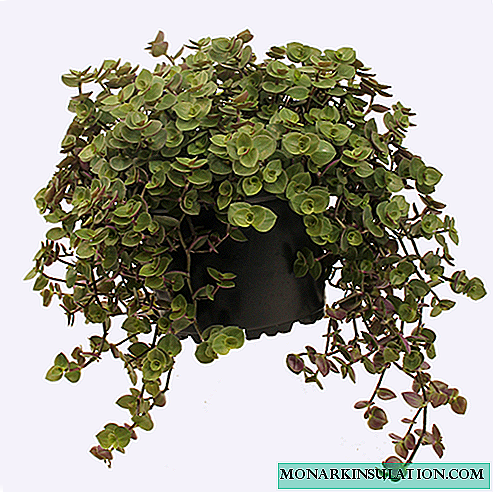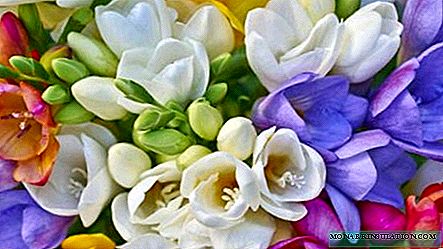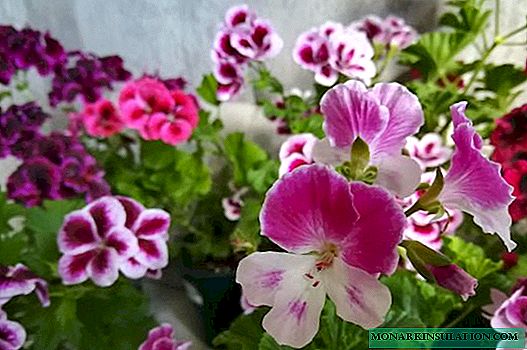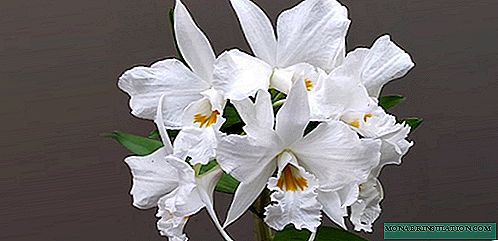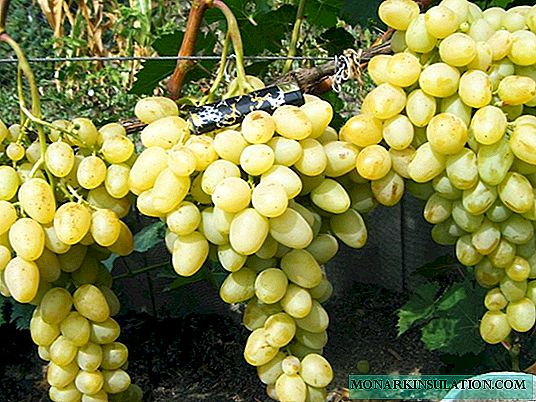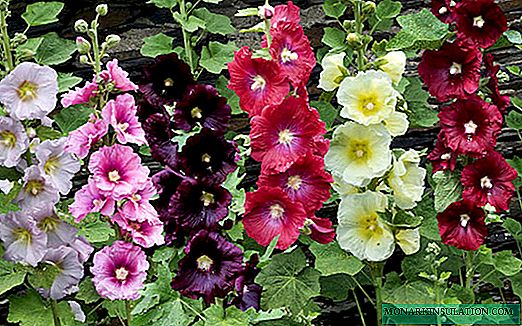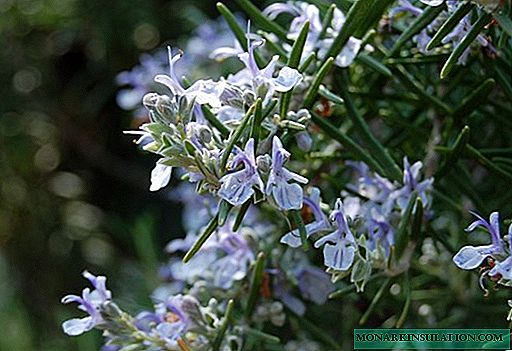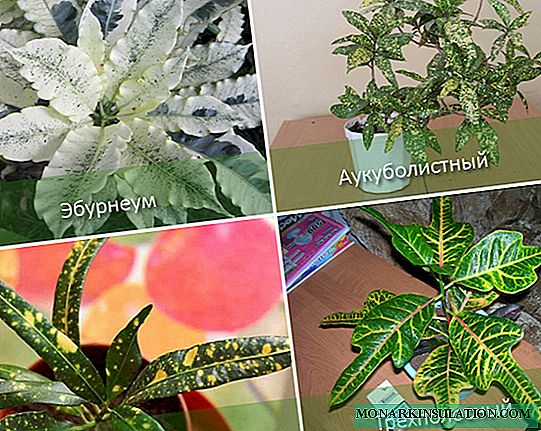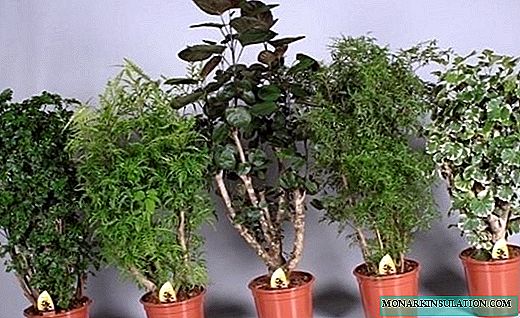Poliscias is very popular among flower growers due to elegant and very beautiful leaves. The genus belongs to the Araliev family and is characterized by great diversity. It is sometimes difficult to believe that such different plants can be related. Polyscias is common on the islands of the Pacific basin and in Central Asia. In our latitudes, it is grown as an unpretentious indoor plant. It will surely attract the attention of guests and become a universal favorite.

Botanical Description
The poliscias plant has a branched root system that equally spreads in depth and in breadth. Above the surface of the earth are highly branched stems. They are covered with light brown bark and gradually lignify. Surprisingly, even the old branches are characterized by excellent flexibility. They are almost impossible to break, but can be tied into a knot, and then straightened again. The lower part of the branches is quickly exposed and the plant forms bushes with a spreading crown.
Leaves are attached to branches with short petioles. Light or bright green, they can vary greatly in shape. There are species of poliscias with rounded, lobed leaves or narrow, cirrus dissected. The leaf plate can be glossy or leathery, variegated varieties are also found.














Polyscias blooms with small capitate or umbrella inflorescences at the ends of young shoots. They consist of many small whitish flowers. Alas, it is almost impossible to achieve flowering at room conditions, therefore polyscias seeds are not used for cultivation in culture.
Popular views
There are 80 species in the polyscias genus. Among them there are tall and medium-sized shrubs, as well as small evergreen trees. In culture, the following types of polyscias are used.
Poliscias Balfour. The plant is a low, highly branched shrub. The bark of young shoots is painted in a light green tint. Petiole leaves have a rounded, lobed shape and bright color. Their diameter can reach 7 cm. On sheet plates, whitish spots and borders are present. Decorative varieties:
- Poliscias Pinocchio - on the bluish-green large leaves of the vein are drawn in silver;
- Variegata - on the edges of the leaves is an uneven whitish border.

Poliscias Guilfoyle. A large shrub is decorated with unpaired pinnate foliage. Notches are visible at the edges of the sheet plates. The color of the leaves is light green.

Poliscias shrubby (fruticosis). A branched, low bush is covered with petiolate, carved leaves. The light green foliage is similar to the fern fronds and has small notches along the lateral edges.

Polyscias paniculata. The plant forms stunted bushes densely covered with light green leaves. The length of the cirrus-dissected, soft leaves reaches 15-20 cm. A variegate cultivar is found with a golden narrow border at the edge of the leaves.

Polystisias fern (folisypholia). On a spreading evergreen shrub, openwork foliage 30-50 cm long is located. The leaf fractions are tightly adjacent to each other and create a very great resemblance to a fern.

Poliscias is stupid. The plant has large dark green or bluish leaves. Dense leaflets are located on long petioles. The shape of the sheet plate has rounded edges and three-blade division. There is some similarity between the leaves of this species with oak foliage.

Poliscias slam. The plant has an unusual structure of the trunk and branches. The main stem is thickened and strongly curved, and the young branches have a straight, vertical shape. Foliage forms a thick, spreading crown. Young leaves have a single, rounded leaf plate. Older leaves have a three-lobed structure and a whitish border around the edge. The view is suitable for the formation of bonsai.

Poliscias Curly forms low bushes. Leaves cover shoots over almost the entire height. Leaf plates have a rounded, double or triple-dissected shape. Leaflets are painted in bright green color and can be covered with yellow spots or have a narrow white border.

Reproduction and transplantation
Reproduction of polyscias is produced by rooting cuttings. This process is very painstaking. You can root young apical shoots or older, lignified branches. The former have a more accurate and decorative appearance, but the latter take root faster. In early spring, cuttings of 8-12 cm are cut. The places of the slices must be sprinkled with crushed charcoal and dried for 3-4 hours. After this, the cuttings are slightly buried in a sand-peat mixture and watered. The pot must be covered with film or glass to create a greenhouse environment. The air temperature should be +25 ° C. Ventilate the greenhouse daily and spray the soil. Roots appear after 3-4 weeks.
Rooted cuttings and young plants are planted in small pots. The bottom of the tank is lined with a layer of brick chips, clay shards or expanded clay. Land for planting should consist of:
- leaf soil;
- soddy soil;
- humus;
- peat;
- river sand.

An adult indoor plant polysias is transplanted less often (every 2-3 years) by the method of transshipment of an earthen coma.
Care Rules
At home, policiasis care does not require much effort. It is important to remember that gradually the plant grows and even in a room can reach a height of two meters. Therefore, it is worthwhile to choose a convenient place for such a decorative giant in advance. In order for the polyscias to form a beautiful crown, it is recommended to pinch the tips of the shoots and conduct periodic pruning.
Poliscias prefers diffused light and small partial shade. It can be placed in the back of the room with east or west windows. In the northern rooms in winter, lighting may be needed, especially for variegated varieties.

The bush needs a moderately cool room in which the temperature is maintained all year round + 17 ... +24 ° C. A constant influx of fresh air is needed, however drafts negatively affect the plant.
You need to water polisias often and in small portions. The top layer should dry, but with prolonged drought, the leaves immediately wilt and begin to turn yellow. Excessive watering is also bad, it provokes the development of root rot. Water for irrigation should be 1-2 ° C warmer than air.
For polyscias, a room with high humidity (70-80%) is needed. It is recommended to use trays with wet expanded clay, place pots near aquariums and fountains, and also often spray shoots. Periodic warm showers will also be helpful. In winter, you should remove the plant further from the hot batteries or use glass to create a barrier to hot, dry air.

Poliscias needs fertilizers throughout the year. From April to October, feeding is done twice a month, the rest of the time - monthly. Use universal mineral and organic compounds for decorative and deciduous indoor plants.
Possible difficulties
Poliscias is resistant to disease. Excessive watering may develop root rot. Sometimes on leaflets you can find traces of scutes, spider mites or aphids. From parasites, the plant is washed under a warm shower and treated with a soapy solution. If necessary, it is worth using insecticides.


